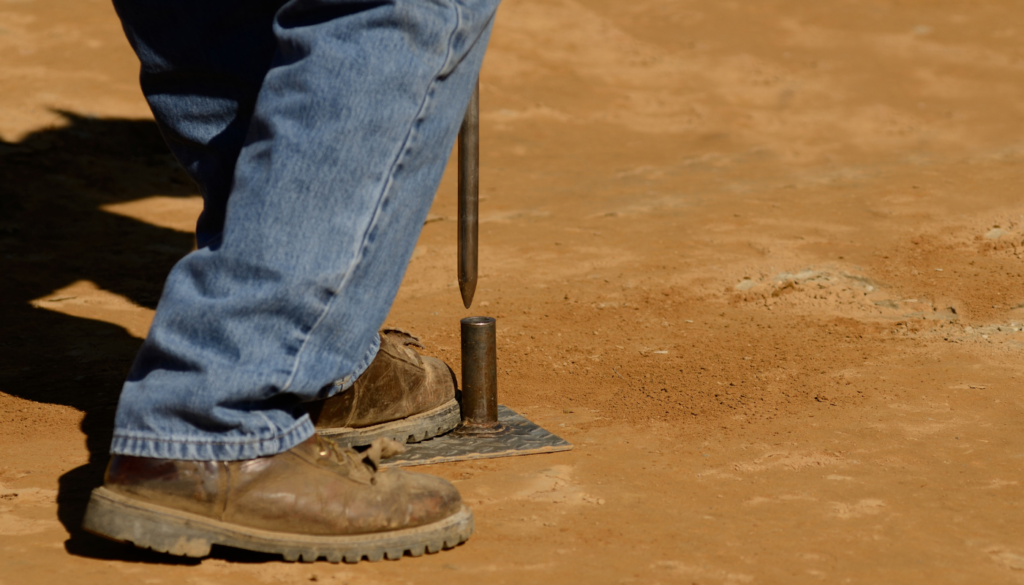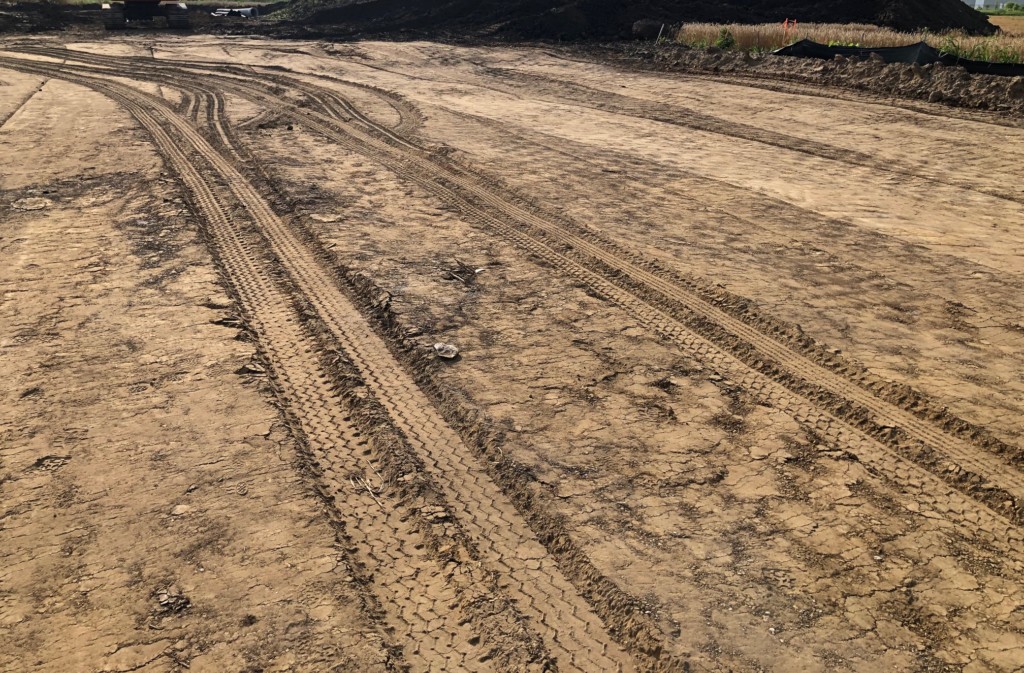
Every year contractors deal with unstable moisture disturbed soils whether it’s due to a rainy season or freeze thaw cycles, it seems almost impossible to avoid. The cost and time of remediating soils can seem overwhelming, so knowing the various remediation methods and their attributes can only help.
1) Discing and Drying (Disking and Drying)
Discing and drying soils is often the first method to be used to dry out moisture disturbed soils usually because it tends to be the most cost effective and often part of contract work. However, this method is typically the most time intensive, which often makes it difficult to attain scheduled deadlines. Earthwork contractors will typically tell you that they can reduce the moisture content by 1 to 2 percent on a 70 degree and sunny day. In lieu of continuous disking, the preferred method of disking moisture disturbed soils is to disk the material, allow the material to crust over, and then repeating the steps over and over until the soil has reached the optimum moisture content range. Typically, the contractor will request soil testing using a nuclear density gauge to verify the moisture content at random test locations within the remediation area before compacting the entire remediation area. Once the moisture content has reached a moisture content that is within the optimum moisture content range, the contractor will then compact the entire remediation area using either a sheepfoot roller, a vibrator smooth drum roller, or a vibratory sheepfoot roller depending on the material type. One major downfall with this method is that it usually does not apply to remediation of moisture disturbed soils greater 12 inches unless undercutting has been performed.
2) Undercut and Backfill
Undercut and backfill remediation can be more effective regarding time management. However, with increased speed comes an increase in costs. To reduce costs, contractors will attempt to use onsite materials as backfill such as clay or crushed concrete from onsite demo. Before undercutting the unstable area, the location should be be proofrolled to determine the outer limits of the remediation area. After undercutting, the underlying soils should be observed by either test pits or hand augering to determine the depth of the unstable soils. Once the depth of the unstable soils is determined, an effective method of undercutting should be determined to minimize construction traffic which could further disturb soils outside of the remediation area. For an example, undercutting using a scrapper may cause further disturbance to surround soils. Instead, a better choice maybe to use a backhoe and load into dump trucks.
After undercutting the unstable location, the backfill material should be selected which typically can make a significant difference in costs. Obviously, off site materials such as crushed limestone would be much more expensive. Instead, the contractor may want to select onsite materials such as clay or crushed concrete. Before using the selected material, the contractor should determine if the selected material is suitable as fill material which may be noted in the geotechnical report, if not, contact the geotechnical engineer of record. If clay material is the selected backfill material, the contractor should make sure the material is within the optimum moisture range. Also, the contractor should identify the proper methods of placing and compacting the fill materials. Some fill materials will need to be compacted using a vibratory smooth drum roller and some materials will need to be compacted using a sheepsfoot roller. Some fill materials will need to be placed in small lifts vs other fill materials. Also, some projects will need to compact to a specified compaction percentage. The contractor should review the geotechnical report for placement and compaction specifications.
3) Lime Modification and Stabilization
One option of drying out soils in place is by lime modification, which dries out the wet materials compared to stabilization which actually creates a semi bound material. Typically, there are specific contractors that perform lime modification and stabilization using a tiller and some type of compaction method such as a sheepsfoot and a vibratory smooth drum roller. Lime modification works well with cohesive soils that are above the optimum moisture content range and that have stable soils underlying the moisture disturbed soils approximately 1 foot below the exposed subgrade. Lime stabilization works also works well with cohesive soils that have a high moisture content and have moderately stable stable soils underlying the moisture disturb soils. Typically, 3 to 5 percent lime is used for lime modification and greater than 5 percent lime for lime stabilization.
4) Cement Modification and Stabilization
Similar to lime modification, cement stabilization also works well with high moisture soils and also uses a tilling and compaction process. One major advantage cement stabilization has over lime stabilization is that it can be used on more soils such as silts and sand. Just like lime modification and stabilization, Contractors typically use an application rate of 3 to 5 percent for modification and greater than 5 percent for stabilization. Typically, cement modification and stabilization is more expensive than cement stabilization depending on the application rate.
5) Fabrics and Geogrid
Typically, the use of fabrics involves undercutting as noted above. However, there are cases where fabric or geogrid are placed directly on the exposed subgrade and an aggregate base is placed directly on top of the geogrid or fabric. Most fabric and geogrid manufacturers will specify the comparative equivalent of removing unstable soil in lieu of using fabric or geogrid.
Conclusion
While there are several other remediation methods for moisture disturb soils, these are the most frequently used. Before removing performing the noted above remediation procedures, the contractor should read the geotechnical report identify approved method of remediation. Also, the contractor may also want to contact the geotechnical engineer of record regarding selected remediation procedures. The geotechnical engineer may also help provide other economical remediation procedures.







